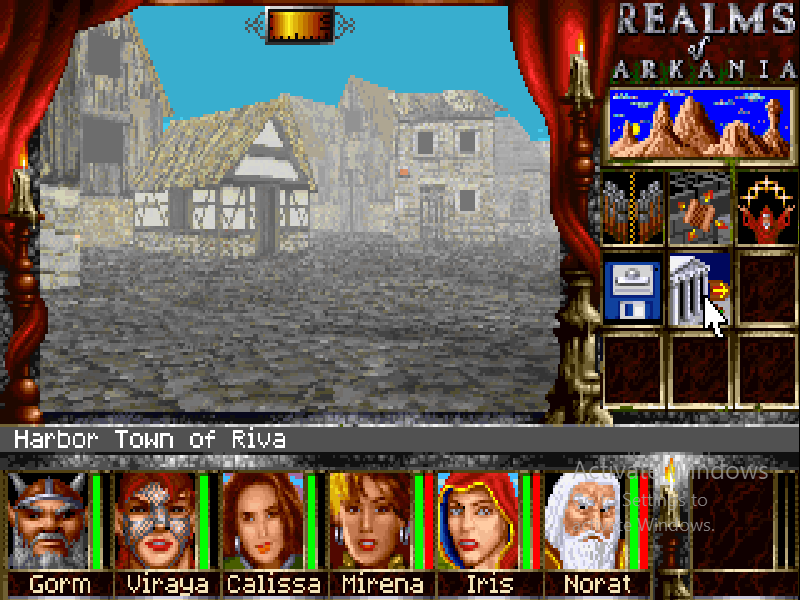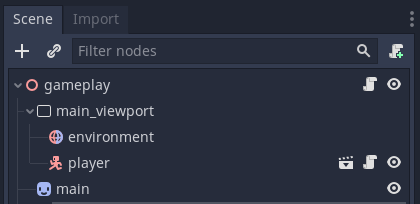Millions of pixels, millions of colours. Who needs all those? Not me!
Pixel-art sprites are still massively popular in games. And many older games that looked good back then, would still be considered to look good today.
Unfortunately old-school 3D graphics rarely get the same love and sometimes are even considered ugly. Well, they are, and they’re great!
Implementation
Viewports
Many older 3D RPGs render only a small portion of the screen in 3D as you can see in this screenshot of Realms of Arkania III below. This is most likely also a way to cut down the rendering cost and improve performance.

In Godot this can be implemented by using a Viewport and a Sprite that contains a ViewportTexture.
Then we can make this sprite smaller than the game window and move in to where we want in the GUI.
We could even hide it behind ugly curtains like in Realms of Arkania.

Here main_viewport contains the rendered game view and main contains a ViewPortTexture targeting the main_viewport.
Low Resolution
Currently the resolution is still too high.
Since we are already rendering to a ViewportTexture this turned out to be quite easy to reduce the resolution.
I changed the main viewport to be a size of 240x240, then I scaled the rendering sprite to 480x480 and turned the Filter flag off.
The effect is especially visible in distant terrain.
![]()
Alternative
I could have just made the entire game resolution smaller and enable stretch in Godot’s project settings to Mode: 2d, Aspect: keep but I figured I might need the extra bit of space later for the UI.
Also by using the ViewportTexture I can make the 3D an even worse resolution if I wanted to by rendering for example at 120x120.
Minimap
Since I figured out how to render to texture I created a very simple minimap. The technique is similar in that it uses a viewport and a sprite to render to. But instead of rendering the main camera’s view I render the view of an Orthogonal camera that follows the player around in a separate viewport.
Obviously this technique won’t work for dungeons, moving under things or clearly making things out such as NPCs. But at least it forms a good placeholder for that hole I made in the GUI for the minimap.